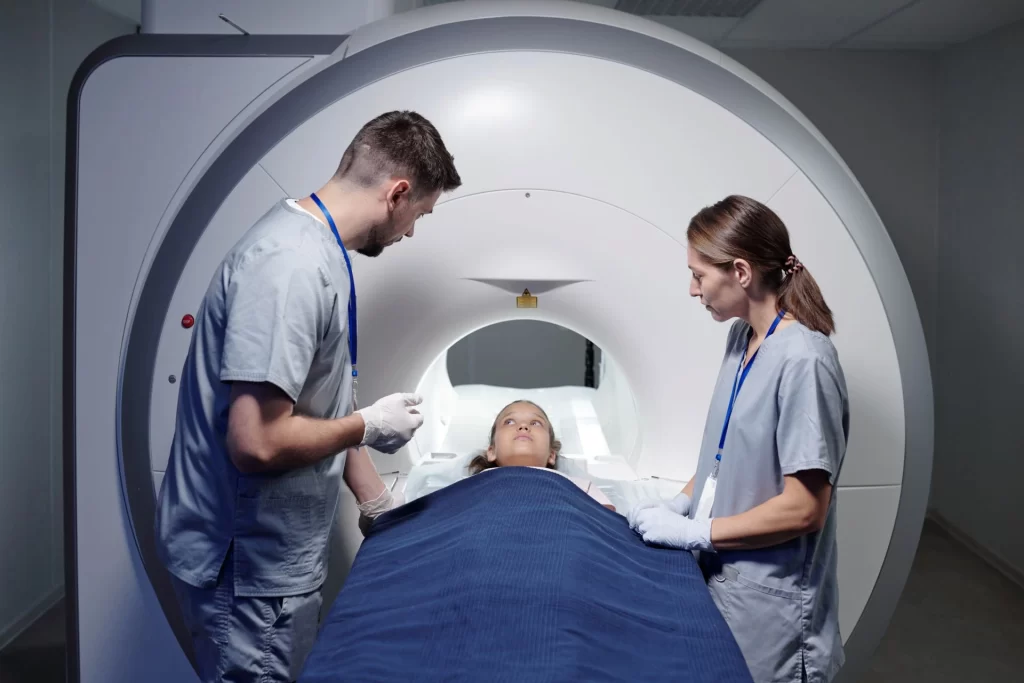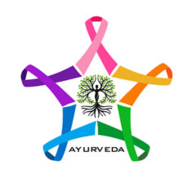Lung cancer is a type of cancer that originates in the lungs and typically in the cells lining the air passages. It is one of the most common and deadliest types of cancer globally. Lung cancer typically occurs when mutated cells in the lungs grows uncontrollably forming a tumor or a mass. This tumor or a mass starts interfering with normal lung function.
Types of Lung Cancer:
1) Non-Small Cell Lung Cancer (NSCLC):
This is the most common type of lung cancer and accounts for almost 85% of lung cancer cases diagnosed. Its subtypes are described further:
a) Adenocarcinoma.
b) Squamous Cell Carcinoma.
c) Large Cell Carcinoma.
2) Small Cell Lung Cancer (SCLC):
It is less common but more aggressive form of lung cancer and is strongly associated with smoking. It tend to spread more rapidly than NSCLC.
What are different diagnostic tests and procedures for Lung Cancer?
Diagnosis of lung cancer includes series of tests and procedures to confirm the diagnosis of cancer, and to further determine its type and assess its stage. Further is mentioned some common diagnostic methods for lung cancer:
1) Imaging Tests:
a) Chest X-Ray: This is often the first test to detect abnormal masses or nodules in the lungs.
b) CT Scan (Computed Tomography): CT Scan provides cross sectional images of the lungs and proves beneficial in detecting small tumors that may not be visible on X-Ray.
c) PET Scan (Positron Emission Tomography): It uses radioactive tracers that highlight the cancerous tissues and proves better in determining the spread of cancer to other parts of the body. It can also be used for diagnostic purposes.

d) MRI (Magnetic Resonance Imaging): It is used in specific cases to examine the brain or spinal cord metastasis if suspected.
e) Bone Scan: It is used to check if cancer has spread to the bones.
2) Sputum Cytology:
A sample of mucus (sputum) is coughed up from the lungs and is examined under a microscope to check for cancer cells. This is more effective for cancer cells that starts in major airways especially squamous cell carcinoma.
3) Biopsy:
A biopsy involves removing a small sample of tissues or cells from the lungs and to further examine it under the microscope. It is the most definitive way to diagnose breast cancer. The types of breast cancer are:
a) Bronchoscopy: A thin and a flexible tube with camera (bronchoscope) is passed through the mouth or nose into the lungs and sample is collected from the affected lobe of the lung.
b) Needle Biopsy or Fine Needle Aspiration Cytology (FNAC): A needle is inserted through the chest wall and tissues or fluids is removed from the affected area. This is normally done under guidance of CT Scan or Ultrasonography.
c) Surgical Biopsy: In few cases, a surgeon may remove a sample of lung tissue through a small incision (thoracoscopy) or open surgery (thoracotomy).
d) Endobronchial Ultrasound (EBUS): It combines bronchoscopy with ultrasound to guide needle biopsies of lymph nodes or tumors near the airways.
e) Mediastinoscopy: It is a surgical procedure that is done to examine and sample lymph node in the mediastinum (the area between the lungs).
4) Molecular and Genetic Testing:
After the lung cancer diagnosis, the excised tumor tissue can be tested for specific genetic mutations (e.g. EGFR, ALK, ROS. BRAF, KRAs) or biomarkers (e.g. PD-L1). This proves beneficial in determining if targeted therapy or immunotherapy is a better treatment option.
5) Blood Tests:
While there is no definitive blood test to diagnose lung cancer, certain tests can help to guide the line of treatment further.
a) Complete Blood Count (CBC): This helps to check anemia or other abnormalities.
b) Tumors Markers: Some cancer release certain markers into the blood, but these are not definitive for diagnosis.
c) Circulating Tumor DNA (ctDNA): It is a new test that help to detect cancer DNA in the blood and it can help to guide treatment.
Dr. Ravi Gupta – Best Ayurvedic Doctor for Lung Cancer Treatment
Dr. Ravi Gupta, M.D. (Ayurveda), is a well renowned and esteemed Ayurvedic Cancer Consultant and is one of the best Ayurvedic doctors for lung cancer treatment through Ayurveda. He has over 13 years of experience in Ayurveda Oncology and has successfully treated numerous lung cancer patients.
He has a holistic and patient-specific approach in the treatment of lung cancer. Different treatment modalities of Dr. Ravi Gupta. Ayurveda Cancer Consultant in the treatment of Lung Cancer are:
1) Herbal Medicine in the treatment of Lung Cancer Patient: Dr. Ravi Gupta prescribes certain anti-cancer herbs like Ashwagandha (Withania somnifera), Turmeric (Curcuma longa), Tulsi (Ocimum sanctum) etc to lung cancer patients.
2) Panchakarma or Detoxification Treatment for Lung Cancer Patient: Panchakarma or Detoxification Therapy helps to remove toxins or dustha doshas from the body of lung cancer patients. This toxin or dustha doshas is the causative factor behind lung cancer.
3) Rasayana or Rejuvenation Therapy for Lung Cancer Patient: This Rasayana or Rejuvenation Therapy helps to enhance longevity and strengthen the immunity in lung cancer patients.
a) Lifestyle Management for Lung Cancer Patient: Breathing exercises, yoga, and stress management helps in holistic healing of lung cancer patients.
+91-9819274611
Your health is my priority, and together, we can work towards a brighter, healthier future.
— Dr. Ravi Gupta, M.D. (Ayurveda),
Ayurveda Cancer Consultant,
Specialist in Ayurveda and Panchakarma.


